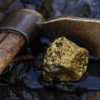Lundin Gold Inc (TSE: LUG) (OTCMKTS: LUGDF) expanded its operations at the Fruta del Note gold mine in Ecuador by integrating Jameson flotation cells.
The addition is part of a broader expansion plan unding upgrading the processing capabilities to handle increased throughput. According to Friday updates, these high-efficiency floation cells arrived on site in the third quarter of 2024.
The company anticipates that implementation of the cells at Fruta del Norte will yield several positive impacts.
Lundin anticipates higher gold recovery rates through an improved flotation process, potentially increasing production without requiring substantial additional mining activity.
The efficiency of Jameson Cells may reduce energy consumption and the need for reagents, lowering overall operational costs. This technology also minimizes energy use and potentially reduces waste production.
The expansion aims to boost the mine’s throughput from 3,500 to 4,200 tonnes per day. The company believes this should increase annual gold production.
Jameson Cells are a type of high-intensity froth flotation cell developed by Professor Graeme Jameson of the University of Newcastle, Australia. Jameson Cells enhance recovery rates and concentrate grades. Additionally, they potentially promote more sustainable mining practices by reducing energy consumption and operational costs.
This tech differs from conventional flotation cells by introducing feed slurry and air in a combined stream through cylindrical columns called “downcomers.” This design also allows for more efficient mixing of air and slurry, generating fine bubbles.
Each downcomer’s slurry jet draws in air, creating a high-intensity mixing environment that enables effective collision and attachment between air bubbles and mineral particles. Attached mineral bubbles form a froth layer where valuable minerals are collected, while waste particles, or tailings, sink to the bottom.
Read more: Calibre Mining revenue dips in Q3 as Valentine Mine nears completion
Read more: Mid-tier gold producer reconsiders production guidance after Q3 setbacks
Several companies have invested in Jameson Cell tech
These cells offer several advantages. They eliminate the need for air compressors, which significantly reduces energy consumption. Furthermore, their design effectively recovers fine particles that are often lost in traditional flotation methods.
Additionally, Jameson Cells occupy a smaller footprint than conventional flotation cells. This makes them ideal for plant expansions where space is limited. Initially developed for fine particle recovery, Jameson Cells are now applied to a range of industries, including coal, base metals, precious metals, potash, oil sands, and the cleaning of solvent extraction liquors.
Several operations and projects have recently invested in Jameson Cell technology, including Aeris Resources‘ (ASX: AIS) Tritton copper operations, Hudbay Minerals Inc‘s (TSE: HBM) (NYSE: HBM) Copper World Complex, and South32‘s (ASX: S32) Hermosa project.
During the September quarter, Lundin Gold completed detailed engineering for the processing plant expansion at Fruta del Norte, procured all major items, and finished concrete work, with structural steel erection still in progress.
The company successfully commissioned the new tailings line on the same day the three Jameson Cells and concentrate filter arrived. Subsequently, Lundin Gold anticipates the reclaim line will be completed by the end of November.
The processing plant expansion, laid out in a December 2023 three-year outlook announcement, aims to increase throughput capacity from 4,200 t/d to 5,000 t/d. In 2024, gold production is projected to reach 450,000–500,000 ounces, based on an average throughput of 4,500 t/d. Production could rise to 475,000–525,000 ounces in 2025 and 2026 at the 5,000 t/d rate.
.
Follow Joseph Morton on Twitter
joseph@mugglehead.com














